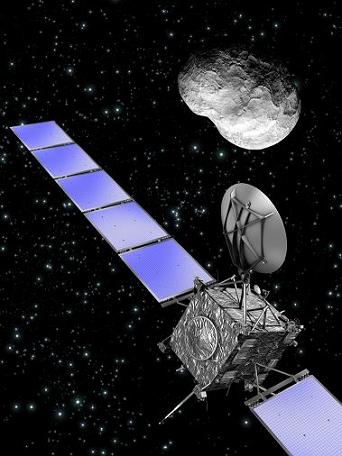On July 10, 2010, the European comet chaser Rosetta will perform the second asteroid flyby of its mission. The first flyby was performed on September 6, 2008, when Rosetta had a close encounter with the asteroid 2867 Steins. Rosetta will skim by the asteroid 21 Lutetia at approximately 3,000 km. The speed of the spacecraft relative to the asteroid will be around 54,000 km/h.
The asteroid Lutetia was discovered on November 15, 1852, by the German astronomer Hermann Goldschmidt. Besides the characteristics of its trajectory, few things are known about the asteroid. From the preliminary observations made by Rosetta, scientists were able to estimate the diameter of the asteroid to 134 km, but the actual shape and composition still remain to be determined.
During the flyby, the spacecraft will operate in a special Asteroid Flyby Mode. This will allow the spacecraft to control its attitude and keep the asteroid in the field of view of the imaging instruments carried onboard.
Rosetta has to follow a complicated trajectory that includes three Earth gravity assists and one at Mars, in order to accelerate to the speed needed for reaching its final destination. The last gravity assist maneuver occurred on November 13, 2009, when Rosetta swung by Earth.
After 6 years into the mission, the systems on the spacecraft are doing very well, and the best is yet to come: the rendezvous with the comet 67/P Churyumov-Gerasimenko in 2014. Rosetta will deploy a small lander on the surface of the comet, and it will continue to fly alongside the nucleus of the comet for more than one year.
OrbitalHub will re-cast the live webstream from ESOC, ESA’s European Space Operations Center, in Darmstadt, Germany. The program starts July 10, 2010, at 20:00 GMT. The closest approach will occur at 20:10:07 GMT. Come back and watch the events unfold!










 Subscribe to our RSS feed
Subscribe to our RSS feed











There are no comments.
Add A Comment